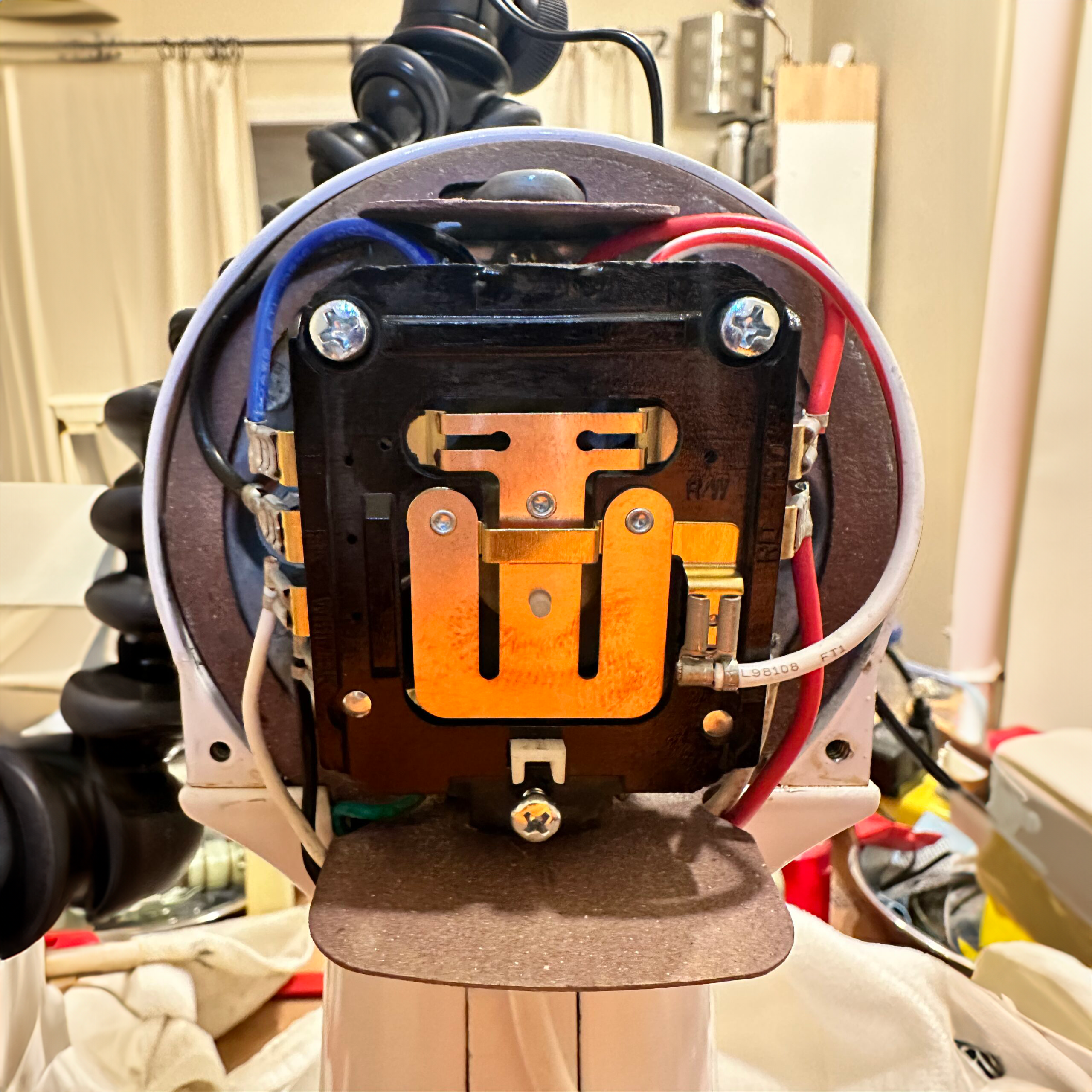Troubleshooting: Mixer Won’t Turn On

Introduction
Most of the advice here applies to tilt-head K45-type models (Classic, Artisan, Ultra Power, etc but not the Artisan Mini or Accolade) and K5-type bowl-lift models (K5SS, KSM5, KSM50 and their relatives). These models are distinguished by plastic motor brush covers, one on either side of the upper motor housing.
If a “Pro” series model (KG25, KV25, KP26, and similar) or Accolade won’t switch on, you can skip to the last section.
Basic Troubleshooting Steps
Note: always unplug the mixer before starting any troubleshooting, and in between troubleshooting steps.
Check the Outlet
K45/KSM90/KSM150 and similar (“Classic”, “Ultra Power”, “Artisan”): the first thing to check is that the outlet is working correctly. Plug something else into the outlet; if it doesn’t turn on either then the issue is with the outlet. Check for tripped breakers or opened GFCI outlets.
Check the Motor Brush Orientation
If the outlet is OK (it usually is, but bears checking), the next thing to do is ask yourself: “Did I, or someone else, remove the motor brushes, whether out of curiosity or to diagnose some other problem?”
The motor brushes are under plastic covers on either side of the “head” of the mixer. In mixers of this model type with solid-state speed control, the motor brushes must go into their holders in a specific orientation. If they aren’t lined up correctly, they won’t make contact with the motor armature and the mixer won’t run.
So if the answer is “yes, I (or someone else) removed the motor brushes”, remove them again on both sides and check the orientation. With the motor brush removed, shine a light into the brush holder and look inside. About an inch inside you’ll see a little “bump”. This must line up with the angled face of the motor brush; so check this and make sure it’s correct. (Do this even if you are sure that you didn’t remove the motor brushes before.)
If correcting the motor brushes doesn’t resolve the problem, the next thing to check is the operation of the speed control plate.
Check the Speed Control Plate
Unplug the mixer, and then remove the rear cover. (Unscrew the screw at the top, tilt the cover away from the mixer slightly, lift it up, and remove.)
Looking directly at the back of the mixer, you’ll see a flat brown plastic plate, with flat metal springs in the center. This is the speed control plate. On the inside of the plate, behind the lower left corner, there’s a contact point. You can see this if you turn the mixer so that the left side is facing you.
As you move the speed control lever from “off” to “stir”, a switch bar will lower and make contact; you can watch this happen. When you move from “stir” to “off”, the switch bar will raise and break contact.
If the switch does not make contact, the mixer won’t turn on. This can be resolved by carefully adjusting the contact point, though in some cases the speed control plate needs to be replaced.
If the switch in the speed control plate is working, the next thing to check is the phase control board. While failures here are not typical, they can happen (particularly if the mixer was plugged into the wrong voltage before).
Mixers with Electronic Speed Control
Models with an electronic speed control (Accolade, “Pro”, “Pro Line”, and the 2023-on production bowl-lift models): the speed control has a safety feature which prevents the mixer from starting if the speed control is in any position other than “Off” when the mixer is plugged in. So if the mixer doesn’t turn on, first unplug the mixer; then move the control to “Off”, and then plug the mixer back in.
If at that point the mixer does not turn on, the electronic speed control has likely failed and will require replacement.